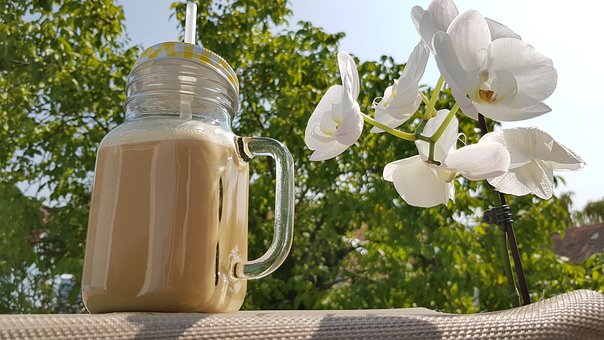If people want to lose weight and fat, people have a misconception that fats should avoid or fats are not good for their health. This chapter is important for people who think that fats are harmful for weight loss because fat plays an important role for maintaining optimal health.
Importance of fats in our body; –

(1) Poor lifestyle and food habits cause inflammation in our body. Inflammation is a Silent Killer. Consuming healthy fat reduces inflammation around the cells.
(2) Fat helps us to survive during prolonged physical and mental sickness.
(3) Fat promotes absorption of fat-soluble vitamins such as Vitamin A D E K.
(4) Consumption of fat ensures satiety. It imparts feelings of fullness and satisfaction that delays onset of Hunger.
(5) Some dietary fats contain antioxidants, which provide stability to the oil and prevent rancidity.
(6) Cushions/ prevent vital organs such as Lungs, kidneys, heart and liver.
(7) Fats serve as thermal insulators in the subcutaneous tissues and certain organs.
(8) Fat contributes to texture, flavors, taste and increases palatability of the diet.
(9) Provide essential Omega 3 fatty acids.
(10) Required for milk production and the normal growth of fetus in pregnant women.
(11) Regulate the function of hormones, promote shiny skin and hair.
(12) Fats have the highest heat energy density of 9 kilo calorie per gram (kcal/gm). It is the major storage form of energy. Fat is stored as adipose tissues in the body. Adipose tissues/ cells are 80% of fat and only 20% of water and protein, so fat is the only answer for bad time or prolonged starvation.
(13) Promote brain power because more than 60% of the brain is composed of fats.
(14) Fats are a storage form of concentrated fuel for the human energy system. They backup carbohydrates, the primary fuel as an available energy source.
Digestion of fats; –
During digestion, the body breaks down fats into fatty acids, which can be absorbed into the blood. fatty acids molecules are usually joined together in groups of three, forming a molecule called the triglyceride. Fatty acids have many important functions in the body, including energy storage. If glucose isn’t available for energy, the body uses fatty acids to fuel the cells instead.
Types of fats;- The types of fat consumed by a person is dependent upon
– Which oil is the family purchases?
– Eating Out pattern
Moreover, Any diet comprises visible fats and invisible fats.
Visible facts are the fats and oils used such as the table or for cooking.
E.g., Oil, ghee, salad dressing, mayonnaise, butter and cream
Invisible facts are present naturally as an integral component of different food.
E.g., Whole milk, peanuts, soybeans, nuts, oil seeds, spices and fish etc.
Classification; – There are good fats and bad fats.
- Saturated fats
- Unsaturated fats
- Trans fats
(1) Saturated fats; –

These are solid at room temperature. From a chemical point of view, saturated fats are molecules of fats that do not form a double bond between carbon molecules as they are highly saturated with hydrogen molecules.
For example, biscuits, pastries, cakes, butter, ghee, coconut, palm oil, red meat, milk and milk products, cream, Pizza, cheese and deep-fried foods contain saturated fats.
Generally, saturated fats are bad for health cause elevated weight, obesity and LDL (Low Density Lipoprotein).
Now the twist is that, saturated fats (fatty acids) are also three types.
– Short chain fatty acids (SCFA)
– Medium chain fatty acids (MCFA)
– Long chain fatty acids (LCFA)
Long chain fatty acids are found in Animal fat such as fatty fish (Salmon and tuna and fish, fish oil. These damage cardiovascular health and are hard to digest. We should consume these fats, according to our lifestyle and digestive capacity.
Ghee is basically clarified butter, obtained after milk is taken through a process of curdling and heating, has short chain fatty acids, these are easy to digest and promote good health.
Ghee promotes fat burning from stubborn fat areas of the body, healthy bacteria in the body and health of the heart.
Adding ghee in meals reduces the glycemic index of food, so ghee regulates blood Sugar levels and that reduces the risk of developing metabolic syndrome.
Furthermore, We must remember that, we should add ghee in our dal- rice Khichdi-kadhi, Roti-jaggery-ghee, ghee with millets.
While cooking, we should heat ghee on the low flame because ghee has highest smoke point, which goes bad.
https://sparklinglifestyle.in/heal-the-thyroid-gland/
Thyroid gland that has to work overtime during pregnancy and lactation period. T3 (thyroid hormone) that takes the active part for optimum growth of the fetus.
Vitamin D plays a beneficial role in regulating thyroid gland but without short chain fatty acid (ghee), vitamin D is not enough to assimilate.
So, in indian tradition, our elder give to every woman tons of the ghee right from the first period she missed to the period she got post pregnancy.
Recent study shows that, the short chain fatty acids in ghee is prebiotic, something which creates an environment for the good gut friendly bacteria.
The bottom line about ghee is that, ghee is obviously saturated fat but a unique one.
In addition, ghee is a fat burner, reduce cholesterol by increasing the contribution of fats to metabolism. ghee also helps us distress, sleep better and wake up fresher.
Ghee is an antioxidant and conjugated Linoleic Acid. These both are necessary for healthy heart. 2 to 3 teaspoon a day is a good start.
Coconut is an essential fatty acid called medium chain triglycerides (MCT); a fat similar to mother’s milk. MCT are smaller than the large fatty acid molecule. The saturated fat from the coconut comes from a really special fatty acid called the lauric acid, which is good for the heart and improves the body’s fat burning abilities.
The lauric acid and other fatty acids in the coconut improve satiety.
Additionally, Coconut kill pathogens and prevent yeast infection in the vaginal area.
Generally, we should avoid saturated fats from packaged foods and ultra processed food. But ghee, coconut and coconut oil are exceptional, we must consume these fats in moderation in our regular diet.
(2) Unsaturated fats; –
These are liquid at room temperature and are called oils. Proteins have essential amino acids which cannot be synthesized by the body and need to be provided by our diet, just like that fat has also essential fatty acids, which are important to get from our diet for optimal health.
These are healthiest, although many people do not consume due to lack of knowledge. Basically, these fats contain one or more or triple bonds between the molecules.
There are two types of unsaturated fats; –
- Polyunsaturated fat (PUFA)
- Monounsaturated fat (MUFA)
Monounsaturated Fat (MUFA); -They have one unsaturated carbon bond in the molecule. Peanuts, olives, avocados, Almonds, peanut oil, Rice bran oil, olive oil ( For salad dressing, do not heat), Pumpkin seeds, sesame seeds contain MUFA.
MUFA Contains oleic acid which is great for,
-Moisturizing and glowing skin
– Hair growth
– Reduces LDL cholesterol
– Decreases risk for cardiovascular health
– Improving insulin resistance
– May reduce inflammation.
Polyunsaturated Fat (PUFA); – These fats have more than one unsaturated carbon Bond in the molecule. Two types of Polyunsaturated fats,
-Omega 3 fatty acids (Linolenic acids)
-Omega 6 fatty acids (Linoleic acids)
Sources of Omega 3 fatty acids; -Walnut, flax seeds, soybeans, Chia seeds, rajma (kidney Beans), berries, Herbs, spices, beans, leafy greens, cabbage family and mangoes.
Benefits of Omega 3 fatty acids; –

-Reduce triglycerides
– Can fight against depression and anxiety
– Decreases the development of plaque in the arteries
– Enhance the quality sleep
– Promote brain power
– Boost metabolism
– Reduces fat in liver
– Feels energetic throughout the day
– Enhance cardiovascular health
Let’s talk about Omega 6 fatty acids. The reality is our diet has lots of Omega 6 fatty acids and not enough Omega 3 fatty acids. actually, we need to consume lots of Omega 3 and minimum requirement of Omega 6, which cause inflammation in our body.
Sources of Omega 6 fatty acids-; Sunflower oil, soybean oil, corn oils, most of the vegetable oils, cotton seed oils.
Ultimately, we should consume Omega 6 fatty acid in less quantity because some oils contain both Omega 3 and Omega 6 fatty acids.
When eaten in moderation and in place of saturated fat, Omega 6 fatty acids can be good for the heart and appear to protect against heart disease.
For example; Butter, coconut oil, olive oil, and canola oil are relatively low in Omega 6 fatty acids.
(3) Trans Fats; –
Trans fats are the worst types of fats and also called artificial fats. Trans fats are used to preserve food and for giving texture. It is made by converting unsaturated fats into saturated fat by a process called hydrogenation.
Restaurant foods, Fast food chain and companies that produce food on a large scale for commercial purposes as it is cheaper, most processed foods contain trans fats.
As well as, cakes reheat oils, biscuits, Pizza, burgers, French fries, cereals, puffs, fried chickens’ coffee creamer, bhatura, samosa, namkeens and pakoras also contain trans fats.
Dangers of Trans fats; –
– Increases LDL and VLDL
– Lowers HDL
– Increases cardiovascular risk and cancer
– Accelerates ageing
Finally, We have learnt all types of fats.
In Summary, now we will understand, which fat we should include in Our Daily Meal for optimal and extraordinary health.
For example, – Nuts like Almonds walnuts and cashews
– Seeds like sunflower, flax, Chia, sesame, pumpkin, alive
– Coconut
– Avocado
– Dark chocolates
– Ghee
– Whole eggs
– Fish
– Chicken (Occasionally)
– Omega 3 supplements.
.


Leave a Comment